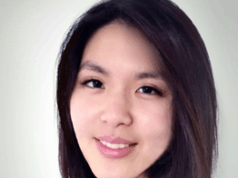 There are new vistas in Oklahoma for those in need of vascular care. That’s “vista” as in Vascular Volunteers In Service To All, or VISTA, a new initiative of the Society for Vascular Surgery (SVS) Foundation whose mission is “to provide better vascular care to underserved populations in the United States,” said Jens Eldrup-Jorgensen, MD.
There are new vistas in Oklahoma for those in need of vascular care. That’s “vista” as in Vascular Volunteers In Service To All, or VISTA, a new initiative of the Society for Vascular Surgery (SVS) Foundation whose mission is “to provide better vascular care to underserved populations in the United States,” said Jens Eldrup-Jorgensen, MD.
He conceived of the initiative and brought it to the foundation. He is the medical director for the SVS Patient Safety Organization Vascular Quality Initiative and chairs the VISTA Program Steering Committee. SVS member Kelly Kempe, MD, is overseeing the first VISTA pilot project, “Disparities in access to care for limb salvage: The Oklahoma Project,” working with the state’s indigenous and rural populations. It builds on current outreach efforts in the state, some of which began as part of Kempe’s 2020 SVS Foundation Community Awareness and Prevention (CAPP) grant.
For both CAPP and this new disparities project, Kempe is working with a multidisciplinary team at the University of Oklahoma. It includes the Oklahoma Primary Healthcare Improvement Collaborative (OPHIC), medical informatics, internal medicine, podiatry, vascular imaging as well as Peter Nelson, MD, professor and chief of vascular surgery at the University of Oklahoma College of Medicine in Tulsa.
Kempe surveyed primary care providers (PCPs) throughout the state, asking them to identify barriers to limb salvage in Oklahoma, which has some of the highest rates of cardiovascular risk factors associated with amputation in the country. The survey also asked PCPs if they were interested in one-on-one conversations to further elucidate the same questions. “We’re identifying the beginning point. What do PCPs see as primary barriers to specific care that leads to major amputation?” said Kempe. “Why do our patients end up with severe chronic disease and with limb loss?”
Though the survey and qualitative data is currently being analyzed, PCPs told Kempe and colleagues they would welcome educational resources and awareness. When VISTA came up, “it made sense to utilize the community outreach data we have and keep building in our state.”
First up is to get a sense of the obstacles PCPs face, said Kempe. VISTA volunteers will meet with the practices, distribute educational materials, discuss prevention that will include important physical exam signs, and provide tools such as portable doppler ultrasound equipment to check blood flow. This will help the PCPs become more confident assessing circulation issues and providing more assistance for patients they’re worried about, Kempe said. The VISTA volunteers want to work to both increase PCPs’ awareness about warning signs and the care vascular surgeons can provide. Then, physicians will know to reach out to vascular surgeons when necessary—and be comfortable doing so, said Kempe.
Once they feel more confident assessing vascular disease, they will know who to call for help, she said. And working with them is key, being collaborative and respectful of the work already being done, she said.
The initiative’s first location of Oklahoma is deliberate. The state has very few vascular providers—only 12—plus one of the highest percentage of rural communities in the country, as well as the largest Native-American population in the country. Patients typically show up late in the disease process, when treatment options are more limited, doctors said.
Collaborating with the local community, cardiologists, cardiothoracic, general, and vascular surgeons all will work to provide necessary care and resources. “The goal is to have active, ongoing outreach among practices, such that our understanding of the potential needs can evolve and our ability to both empower local caregivers and then provide referral support can grow,” said Kempe.
In the late summer and early fall, team members will begin holding the first in-person visits with targeted practices. After screening, patient education will also be provided. “Oftentimes encouraging medical management, including diabetes care, stopping smoking and taking medication can potentially halt the disease,” said Kempe. “We discuss all avenues of prevention and do all we can so the disease doesn’t progress, and promote early detection when intervention may be warranted.”
As time goes on, the VISTA team will check back with the practices and physicians to find out what’s working and what they as volunteers can do better. Ultimately the model will be expanded to include information and assessment for aortic aneurysms, carotid disease and stroke, venous disease and hemodialysis needs.
“I want to emphasize how grateful I am to be a part of this project,” said Kempe. She thanked the SVS Foundation and said she’s grateful to have Nelson in her corner, as someone “who’s interested in doing things a little bit outside what some people consider research.” She said she believes community awareness work “is where sometimes we can have the biggest impact. If we can help patients, it’s a great honor.”
For more information on VISTA, visit vascular.org/VISTA.
VISTA addressing needs in underserved areas
VISTA was born out of Jorgensen’s desire to reach out and do more. He said he’s always been a bit envious of colleagues who have gone overseas to do medical missionary work, he said in an appearance on the Audible Bleeding podcast. With the emphasis emerging over the past year on inequities, he brought a concept to bring modern vascular care to underserved communities to the SVS Foundation.
Refinements and revisions followed, with input from the American College of Surgeons to create VISTA. VISTA’s goal is awareness and prevention, and its initial project grants support initiatives that emphasize risk assessment and focus on bringing vascular care to areas of need.
VISTA organizers reached out to industry and corporate partners, many of whom had unspent funds when the COVID-19 pandemic forced cancellation of virtually all meetings, he said. “We were able to bring the VISTA idea to industry and say, ‘We have a project that addresses social disparities. Would you be interested in funding it?’ And actually, we got very quick turnaround on that.
“Interestingly, talking to corporations, we found out that their new employees want to know what the companies are doing to address social disparities,” said Jorgensen. “This is a really a very opportune time for us.”
While Abbot is funding Kempe’s project, Boston Scientific is providing funding for two additional pilot projects.












